Idea by
Sabrina Morreale, Lorenzo Perri
AA Visiting School El Alto
https://www.aaschool.ac.uk/STUDY/VISITING/bolivia
Call for ideas 2020
Portable Cholets La Mesa
Portable Cholets La Mesa
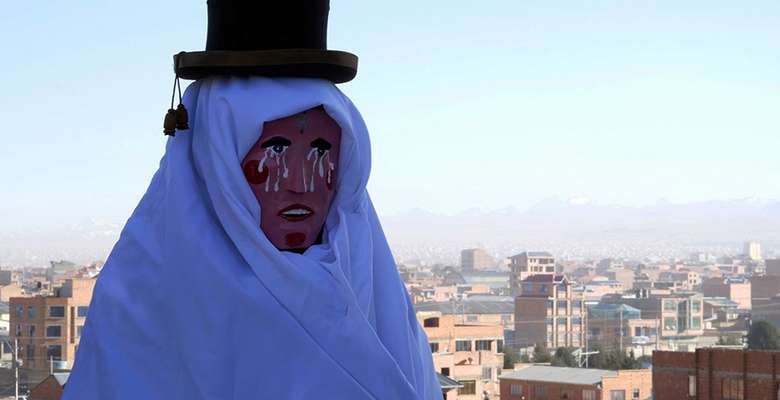
- Site-specific cases
The AA Visiting School identifies the Truthful with the Real, exploring and augmenting its most the extravagant borders; and pursuing Architecture as its physical manifestation. We practice only forms of knowledge based on physical experience: direct or emerged through the tangible re-enactment of empirical conditions. Architecture must be understood as a journey articulated through a series of spatial performances. For us, performing has little to do with practical efficiency or quantitative variables. Rather, it is an evocative tool to activate symbolic links, to claim back identitarian needs and to depict qualitative hedonistic traits into physical spatial compounds.
Today, the performative representation of space, together with its peculiar syntagms and syntax, is an effective tool for a linguistic self-liberation: architects are provided with an appropriate vocabulary that finally re-connects them with a wider public.
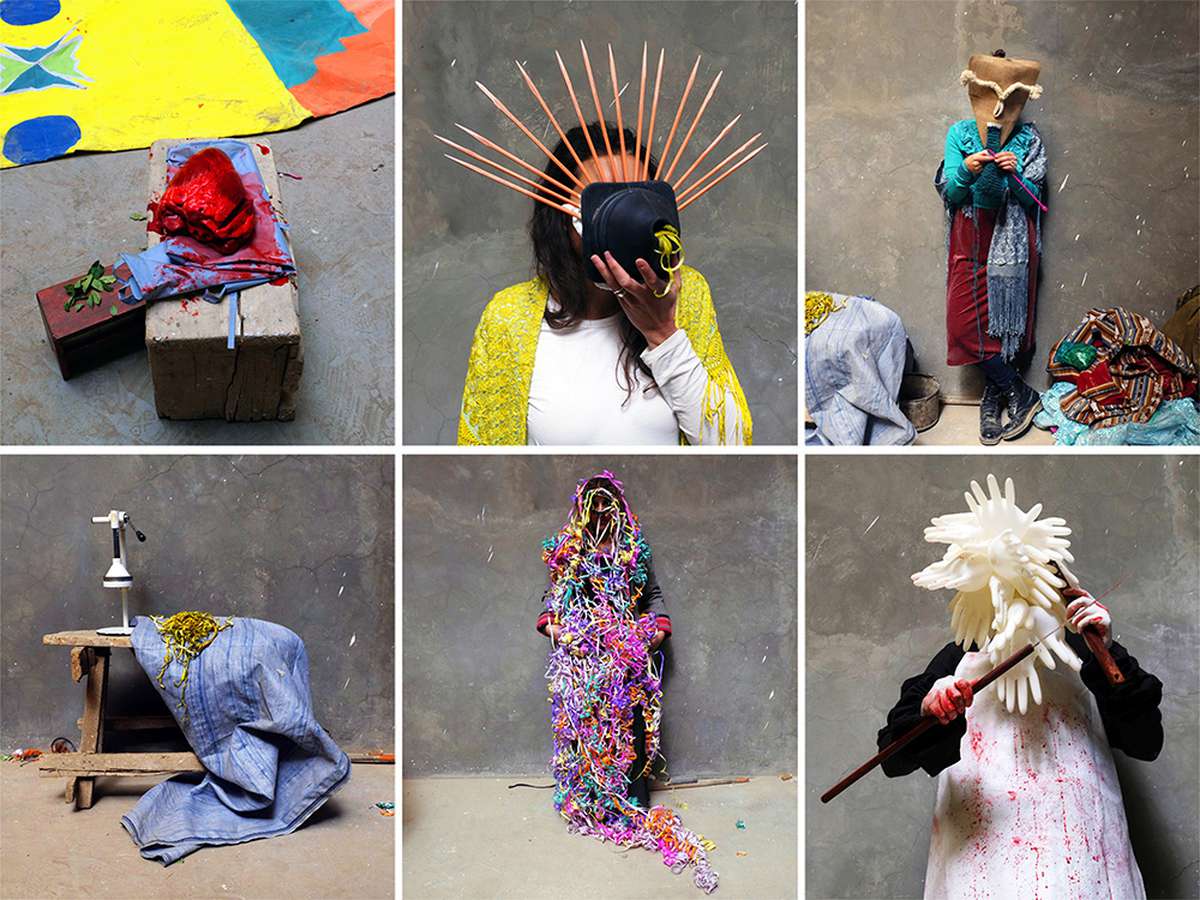
El Alto is characterized by the chaos of its street sellers, the unusual way of travelling around and the peculiar characters that follow one another in everyday life in the Andes. Here the shoe shiner, the coca chewer, the pasankalla, the butcher, the orange seller and the knitter.
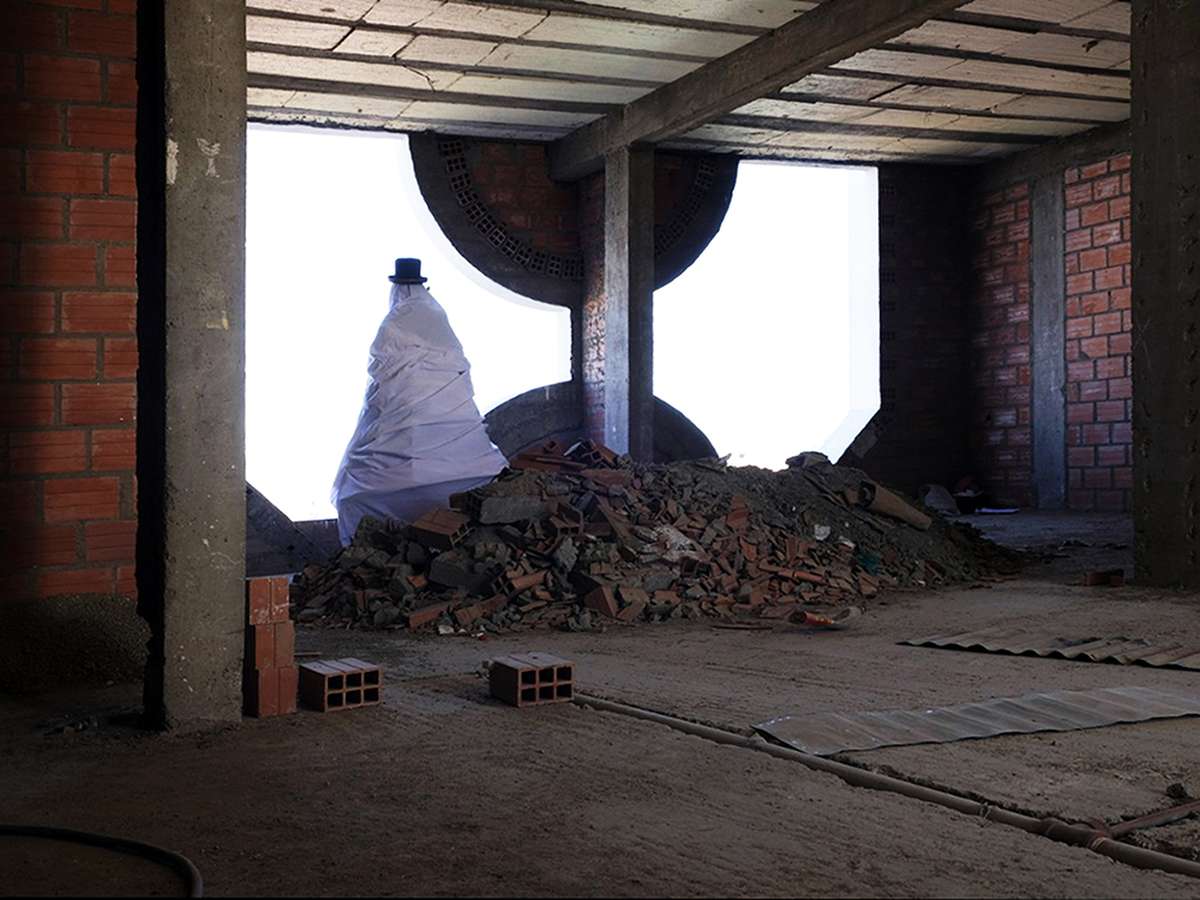
On top of the unfinished Cholet in El Alto, where spatial production is indissolubly tied to symbolic characters, objects and routines.
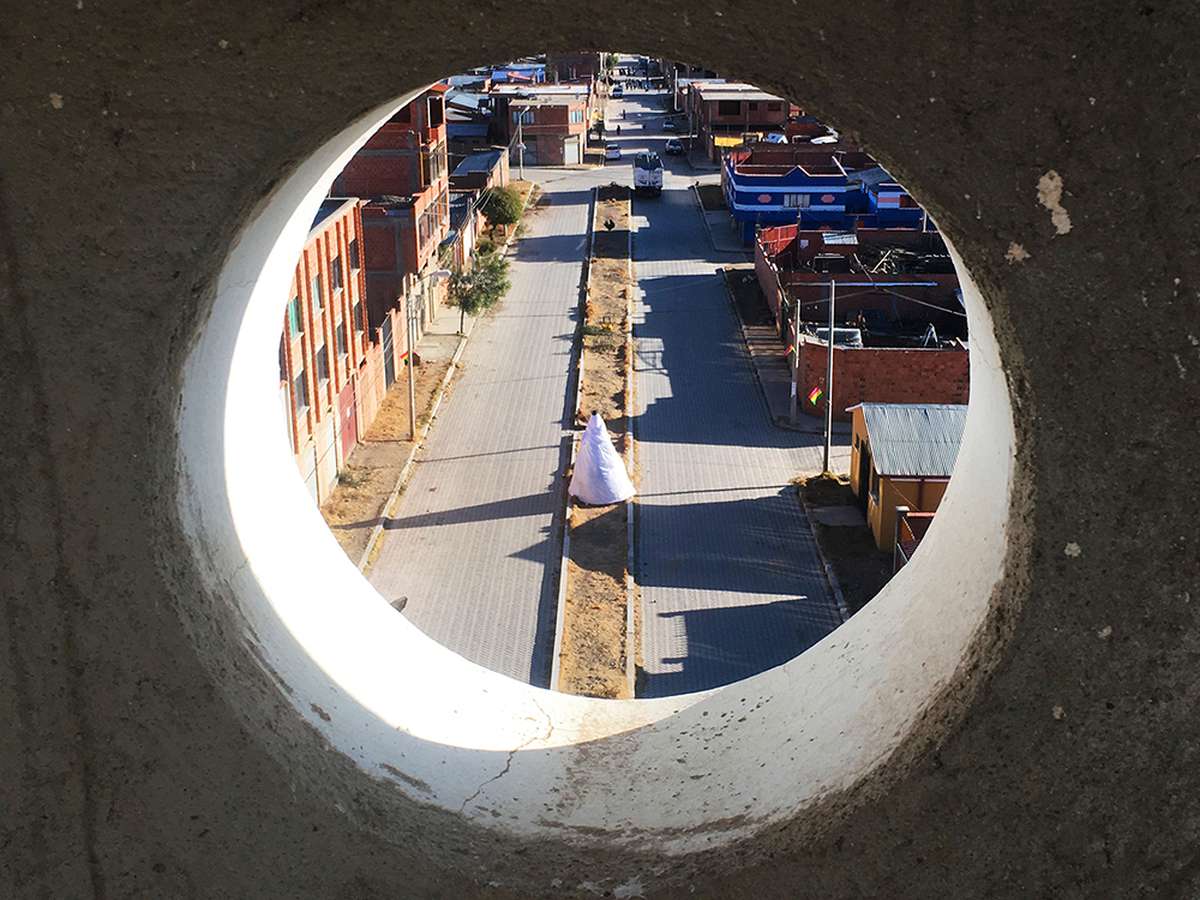
Neither a cholita, nor a virgen, the protagonist is an ambiguous shape who participates to the geometry of the cholet, slowly revealed as the alter ego of its exuberant colourful architecture.
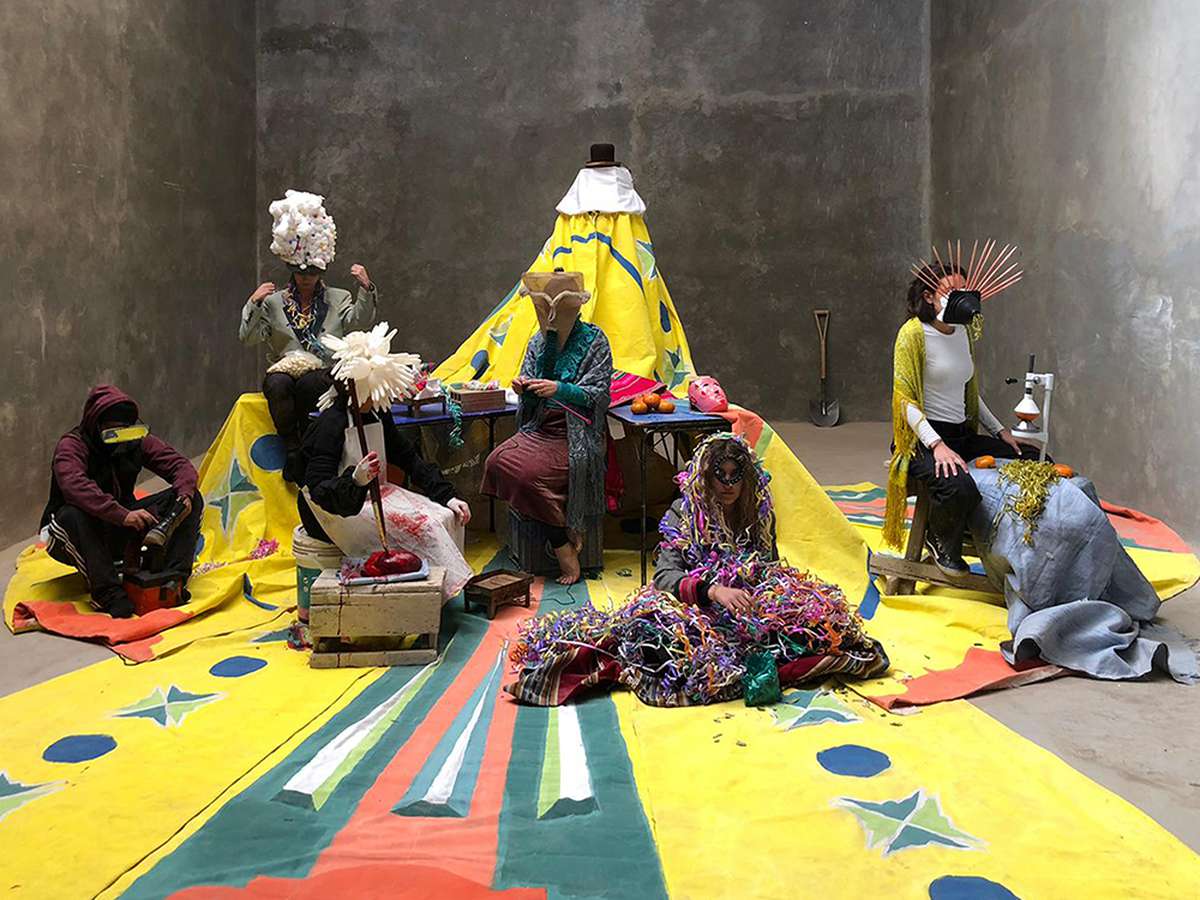
The Mesa is a short extract of El Alto's ordinary life. To understand El Alto, it is necessary to live it, to know the people, to listen to the words that are heard and that tell many more stories than they can ever imagine. Here the protagonists.
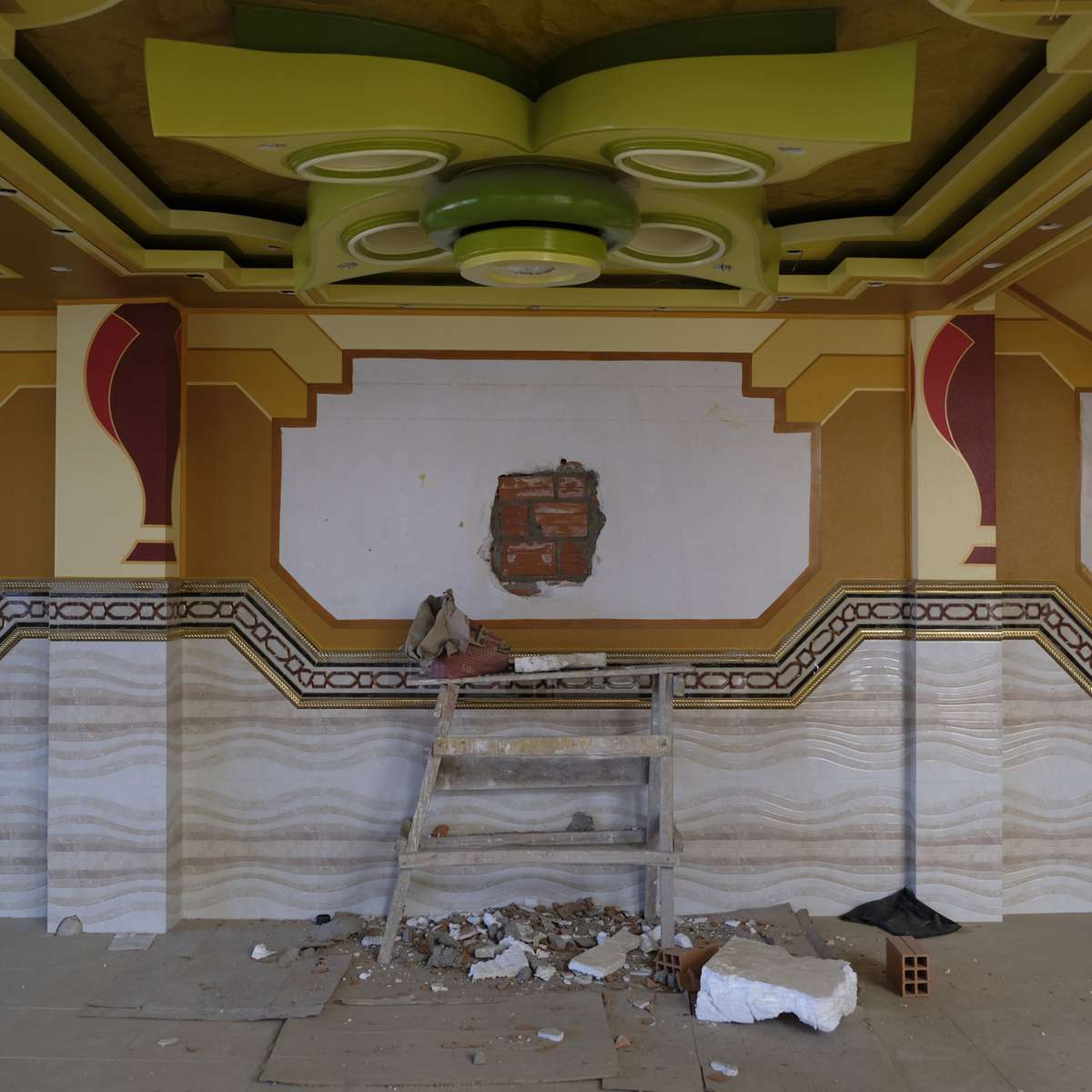
Spirituality and rituals define Bolivian lives, even if the times are changing fast, the context of El Alto keeps developing around these traditions. El Alto, located at 4,150 mt of altitude, is the fastest-growing city in Bolivia, with over a million habitants, is becoming the cultural and economic centre of Bolivia. This growing economy coupled with the Aymara traditions and the need of a space to celebrate their identity has lead to the creation of the new Andean architecture.
Portable Cholets La Mesa
Portable Cholets La Mesa

- Site-specific cases
The AA Visiting School identifies the Truthful with the Real, exploring and augmenting its most the extravagant borders; and pursuing Architecture as its physical manifestation. We practice only forms of knowledge based on physical experience: direct or emerged through the tangible re-enactment of empirical conditions. Architecture must be understood as a journey articulated through a series of spatial performances. For us, performing has little to do with practical efficiency or quantitative variables. Rather, it is an evocative tool to activate symbolic links, to claim back identitarian needs and to depict qualitative hedonistic traits into physical spatial compounds.
Today, the performative representation of space, together with its peculiar syntagms and syntax, is an effective tool for a linguistic self-liberation: architects are provided with an appropriate vocabulary that finally re-connects them with a wider public.
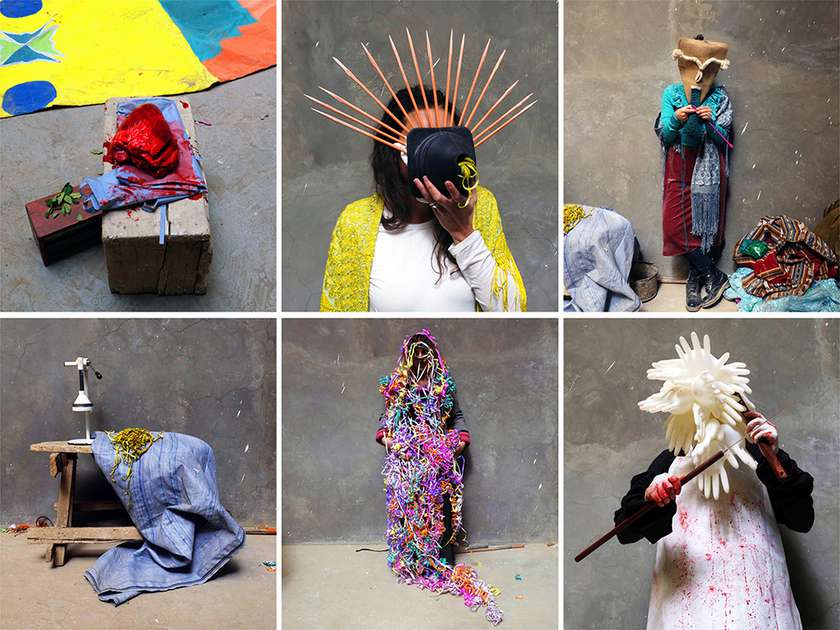
El Alto is characterized by the chaos of its street sellers, the unusual way of travelling around and the peculiar characters that follow one another in everyday life in the Andes. Here the shoe shiner, the coca chewer, the pasankalla, the butcher, the orange seller and the knitter.
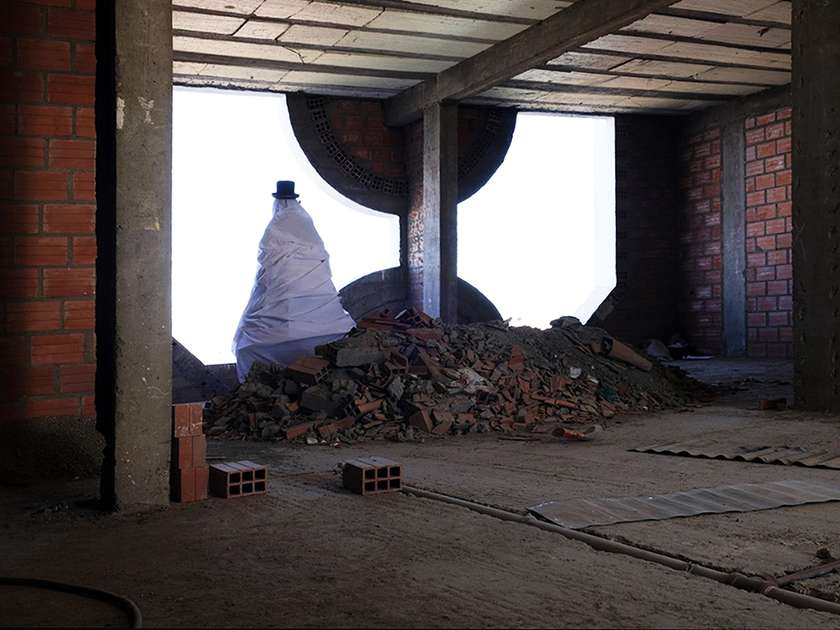
On top of the unfinished Cholet in El Alto, where spatial production is indissolubly tied to symbolic characters, objects and routines.
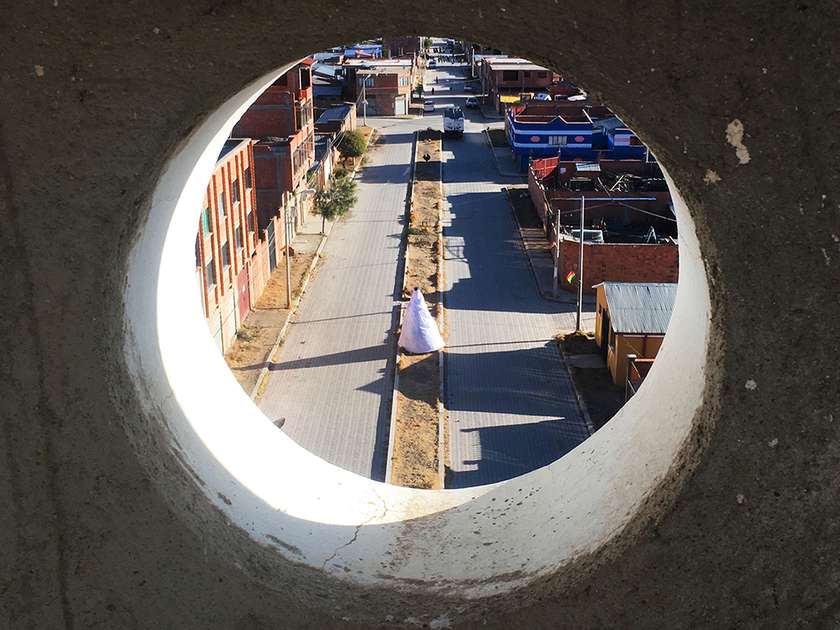
Neither a cholita, nor a virgen, the protagonist is an ambiguous shape who participates to the geometry of the cholet, slowly revealed as the alter ego of its exuberant colourful architecture.
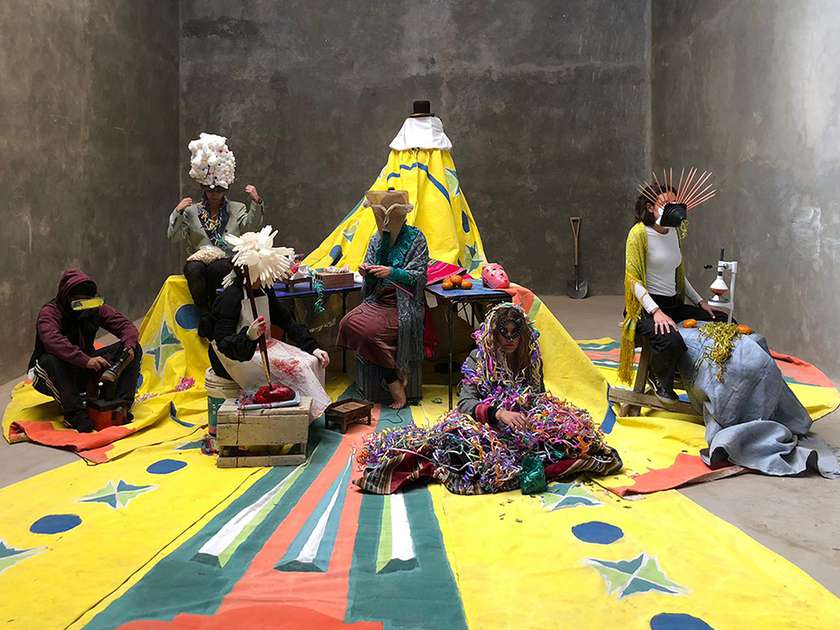
The Mesa is a short extract of El Alto's ordinary life. To understand El Alto, it is necessary to live it, to know the people, to listen to the words that are heard and that tell many more stories than they can ever imagine. Here the protagonists.
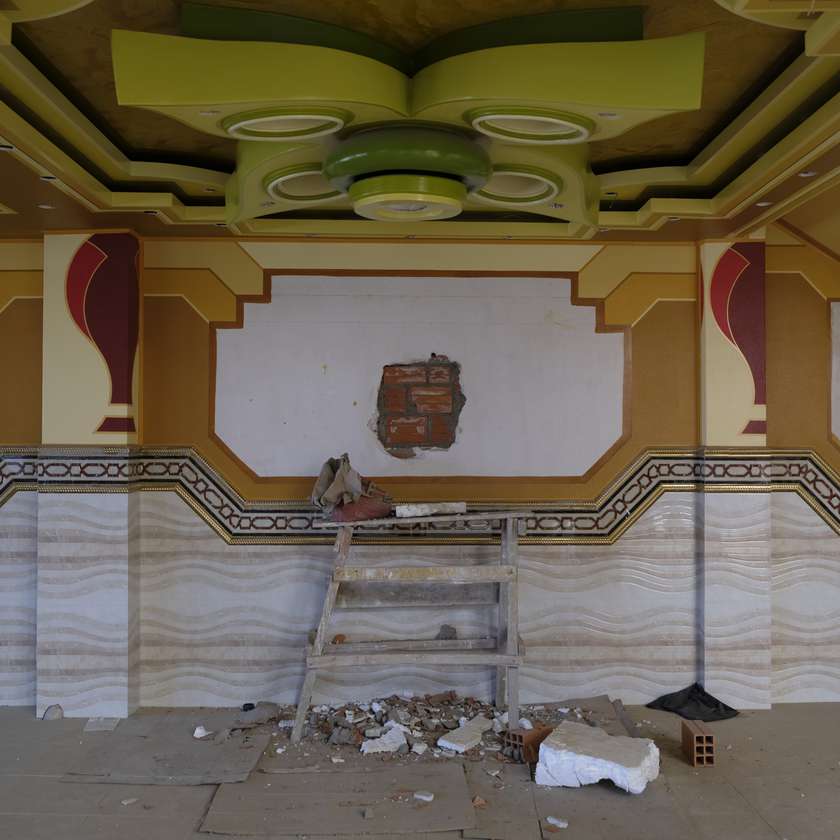
Spirituality and rituals define Bolivian lives, even if the times are changing fast, the context of El Alto keeps developing around these traditions. El Alto, located at 4,150 mt of altitude, is the fastest-growing city in Bolivia, with over a million habitants, is becoming the cultural and economic centre of Bolivia. This growing economy coupled with the Aymara traditions and the need of a space to celebrate their identity has lead to the creation of the new Andean architecture.